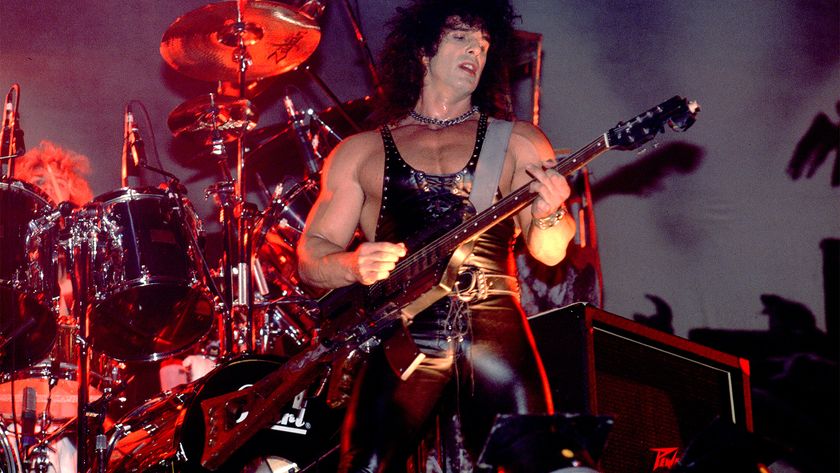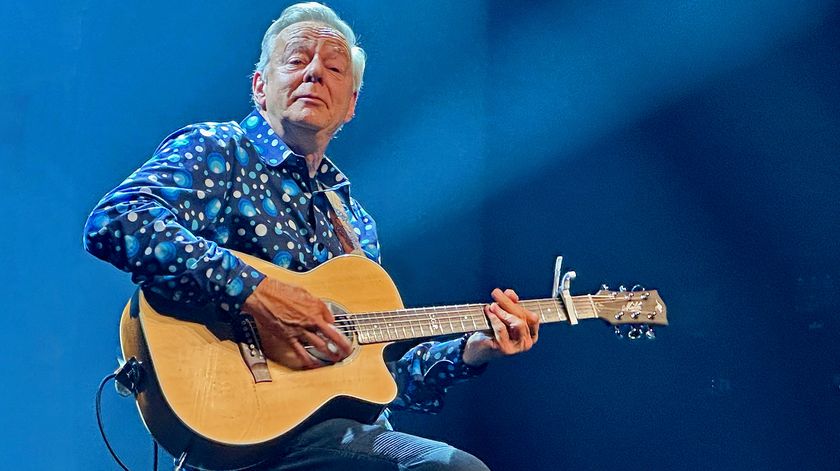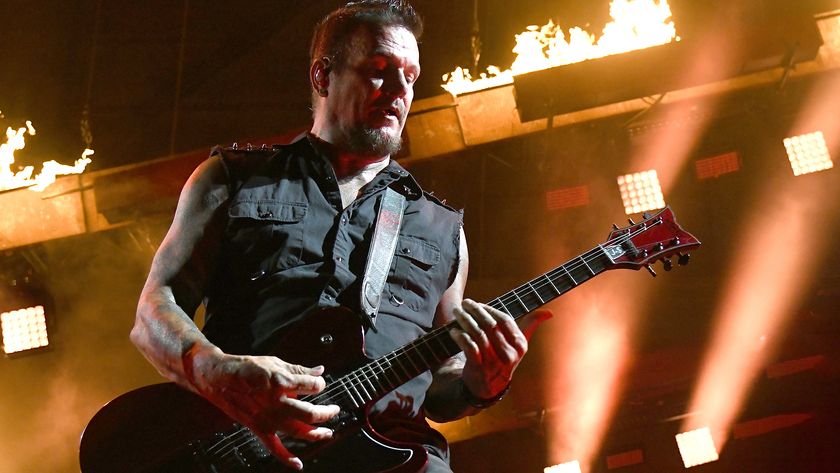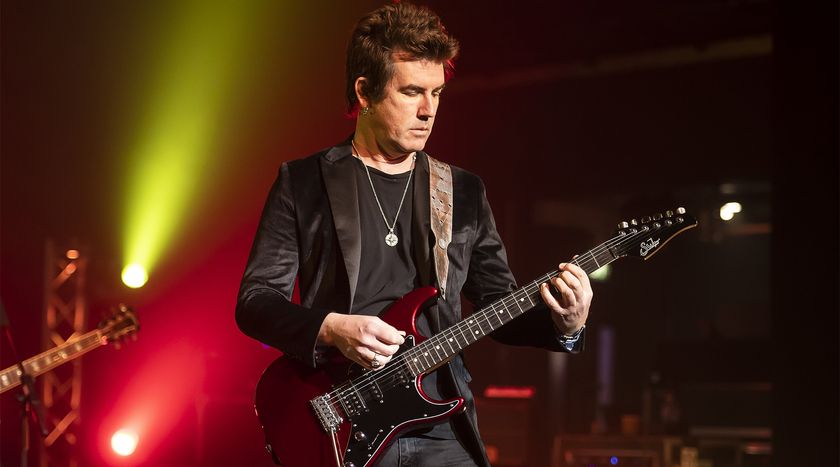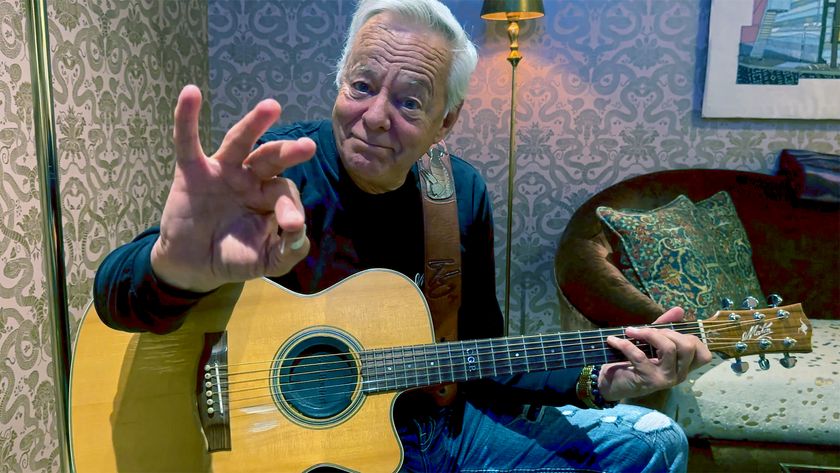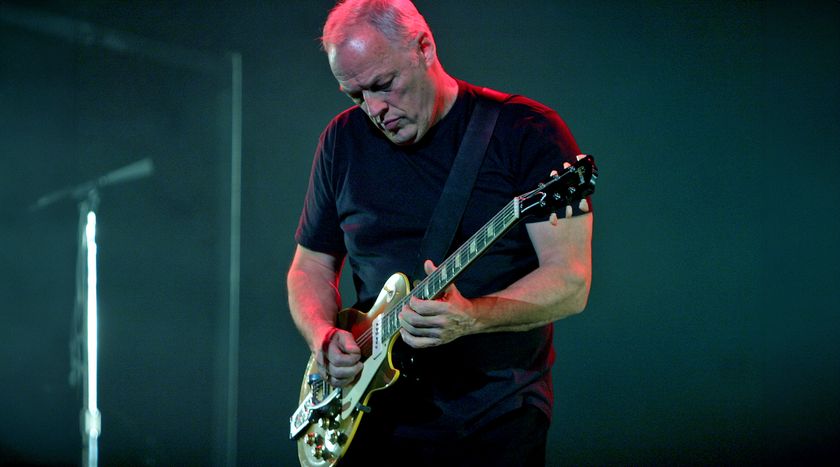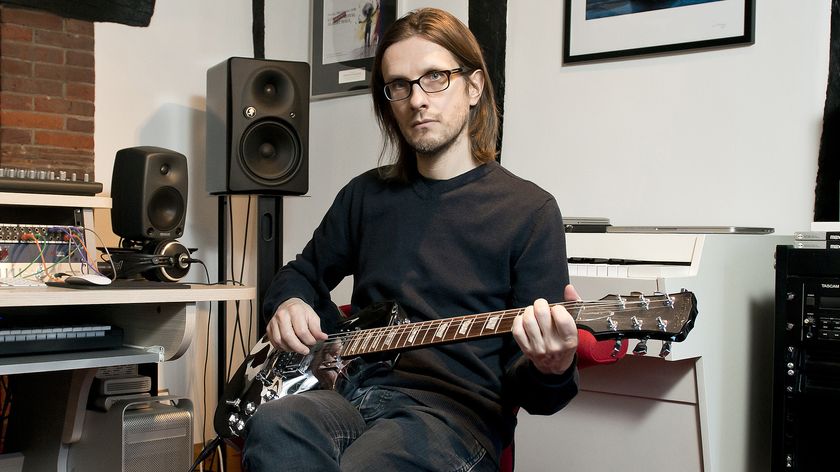Julien Baker Shares Her Stompbox Epiphanies and Discusses the High-Wire Risk of Solo Live Performances
Broadening her sound and her pedalboard for her new album 'Little Oblivions,' Baker looks forward to playing it live in the company of her band.
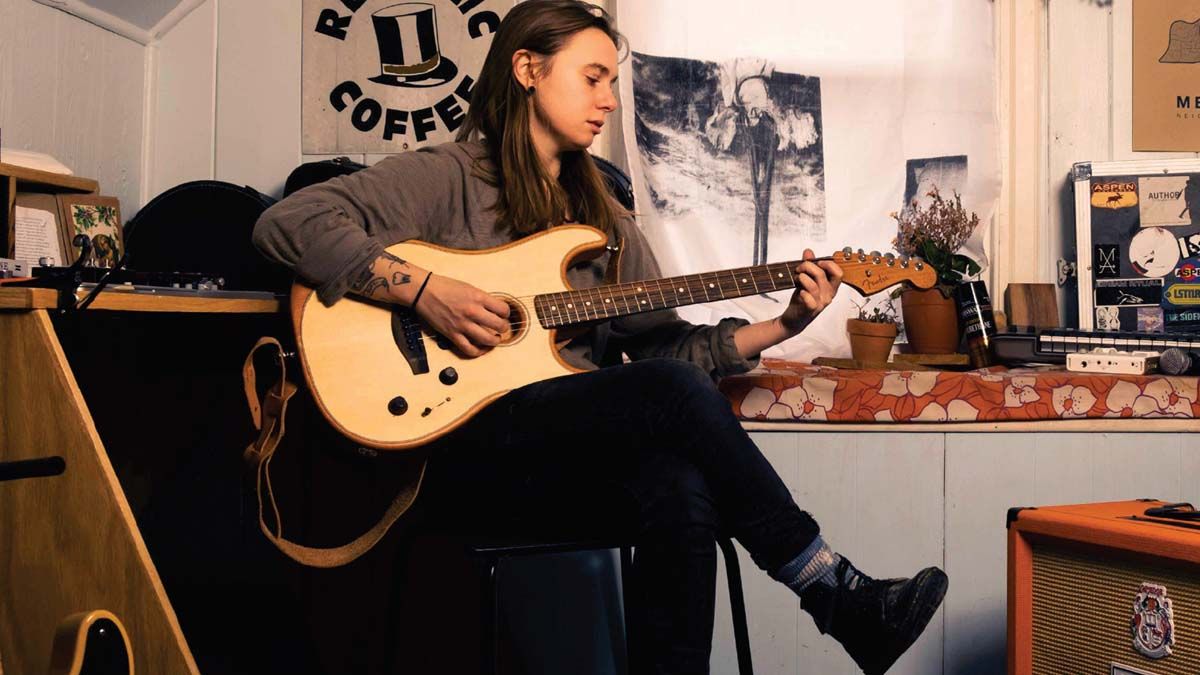
Julien Baker has built her reputation on mesmerizing solo performances where she manipulates an arsenal of loopers and reverbs to create layers of guitar textures from her deft finger work.
On her third album, Little Oblivions (Matador), that approach blossomed into lush full-band arrangements, all played by Baker herself. “For the last two records, I would just show up to the studio, do a bunch of takes for a week and that’s how the song was,” Baker says of the sparse, cathartic Sprained Ankle, recorded in 2014 when she was just 19 years old, and 2017’s Turn Out the Lights.
“With these songs, it was fun to build layers and experiment. I feel like I’ve grown to appreciate the intricacy of production and just making interesting sounds.” Baker’s adventures in looping and layering began simply, with just a Fulltone OCD overdrive and a Line 6 DL4 delay.
“Then all of a sudden I switched and went the other way, and now I have a crazy spaceship to run,” she says, laughing. “I looped because I wanted more layers, and I started experimenting with how to build a soundscape that really is expansive with just one instrument.”
The left turn into broader instrumentation on Little Oblivions was liberating for Baker, whose complex solo-guitar arrangements could sometimes paint her into a corner. But performing while singing, without a click as a safety net, can get dicey if everything isn’t triggered just right.
“When the loops were off, I would be counting three different rhythms in my head so they would pick up on the right spot,” she says. “And I was just like, Why do I do this? It felt like the musical version of when I try to carry all the grocery bags inside at once, even though I could just have someone help me.”
She’ll have a full band to help carry the songs on Little Oblivions when she returns to the stage, but there will still be plenty of “tap dancing” on her pedalboard, she says. In the following conversation, Baker guides us through the stomp-box nirvana that brought her here.

The instrumentation on Little Oblivions is a departure from your previous work. Why did your approach change?
I guess it was a conscious decision, but it didn’t feel monumental. I wasn’t like, “I’m going to do drums now and it’s going to be a huge shift for me,” because I exist most comfortably in bands and have since I was 14.
I’ve missed that dynamic so much. Playing with Boygenius [a trio with Phoebe Bridgers and Lucy Dacus] and getting to have musical chemistry with a whole organism of moving parts was so soul-feeding to me, but before that tour I had been writing full-band stuff.
I played all the instruments on Little Oblivions because I’m a control freak. But what I’m really excited about is when we can go back to touring and getting to have a much less nerve-wracking live experience.
Because in the context of a live band, there’s so much unpredictability that you almost have to have a threshold of grace for what you’re watching. When it’s just me singing, it’s like the entire crowd can hear if I’m a semitone off, and I’m just like, Better not mess up, the whole time in my head.
I played all the instruments on 'Little Oblivions' because I’m a control freak. But what I’m really excited about is when we can go back to touring and getting to have a much less nerve-wracking live experience
On new songs like “Hardline,” the choruses reach outward, whereas your previous songs tended to draw listeners into a more intimate moment.
There’s a weird push/pull with the intimacy of being an artist performing solo, where you can get really intimate and emotional. But then there’s a limit to the dynamic you can have, which is why I kept adding other instruments, like bass, which I can control with my feet, and piano.
I used to stand onstage and think, How is everyone not bored? I’m just playing guitar for an hour and a half. I wanted to play something where I could move around a bit and have a little wider palette.
Your pedalboard has been central to your performances, with multiple reverbs as your secret weapon. Could you walk us through that setup?
I used to have four reverbs on my board. Now I just have the Walrus Descent Reverb and Octave Machine, which I use as more of an octave. I almost exclusively use the shimmer setting and make that a pad. And then I finally broke down and got the Strymon BigSky, and I have extremely dialed-in patches for every song instead of just a universal wash over everything.
If I need a really specific tank reverb, a tile-room reverb or something really huge just for one song, I just make a little patch on the [Line 6] HX Effects. I feel like I’m outing myself as a lazy musician, because for so long I didn’t know how to do patches or have dry and wet separated channels. Now I’m like, Why haven’t I been doing this the whole time? It’s really so helpful.
I finally broke down and got the Strymon BigSky, and I have extremely dialed-in patches for every song
Have you downsized or simplified your board?
It’s the same size, and I guess in some ways it’s complicated, because I have a multi-effects unit with six stomp switches that can be assigned to six different effects. There’s a wet/dry switcher, and then an [Electro-Harmonix] Superego [Synth Engine] to make pads with, and the Walrus and the BigSky.
Then I have this new thing that I love that I bought on impulse. It’s a Hologram Dream Sequence, and it makes a synth-sounding sequence out of your guitar signal. It’s awesome. And I guess it’ll make what I do simpler in some ways.
You typically play Telecasters. What else are you playing to bring these new sounds to life?
I have a modded blue Telecaster with classic Tele neck and bridge pickups, but it doesn’t have a vintage bridge. I have another butterscotch Tele that has a big soap-bar pickup. I love that guitar, especially for the rock stuff. I think for so long I liked the Telecaster because it felt really versatile. The first one that I played for a long time, the blue one, is road worn and I felt like I could be really agile with it.
For this record, when I tour, I got a Fender Acoustasonic Strat. I thought, It’s not going to sound like a good electric or acoustic guitar; it’s going to sound like an okay version of both. But I played that at a whole bunch of our sessions and it was awesome. You can get a really weird Guided By Voices/Neutral Milk Hotel acoustic guitar sound if you want it, and then you can do Tele leads.
I have a kill switch on my board when the wet signal needs a hard cut. I’m really fascinated by it all
What role does your amplifier choice play in your inventive approach to creating guitar textures?
I used to do stereo Fenders onstage because I wanted to be able to kick one on and off, but there was no real loop and effect separation.
I have an Orange Rocker 32, and you can run the two speakers as independent channels with a send/return loop. I run the left speaker dry and the right speaker wet, so if my reverb or one of the pads or effects or shimmers is too much and it’s drowning out the regular signal, whoever’s doing sound can pull it back.
I also have a kill switch on my board when the wet signal needs a hard cut. I’m really fascinated by it all. During the time in quarantine, I’ve just been gear nerding and learning more about my craft and my instrument.
Get The Pick Newsletter
All the latest guitar news, interviews, lessons, reviews, deals and more, direct to your inbox!
Jim Beaugez has written about music for Rolling Stone, Smithsonian, Guitar World, Guitar Player and many other publications. He created My Life in Five Riffs, a multimedia documentary series for Guitar Player that traces contemporary artists back to their sources of inspiration, and previously spent a decade in the musical instruments industry.
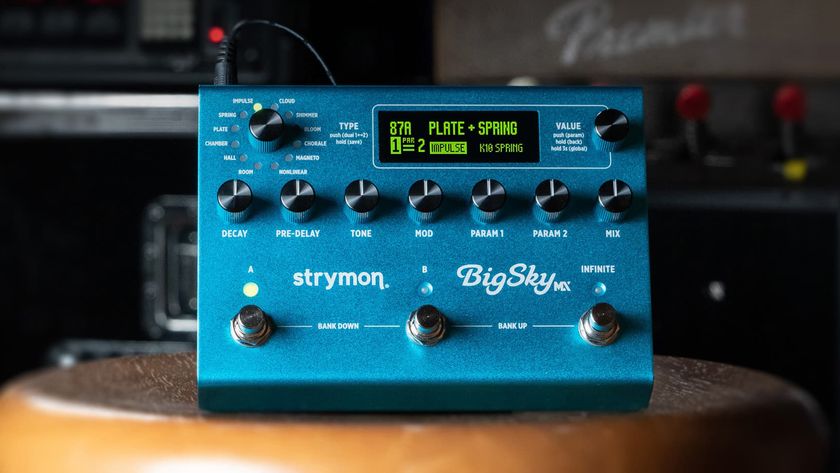
"BigSky MX will be replacing the BigSky as my go-to reverb pedal. I’ve heard nothing that covers all the bases with such pristine and detailed audio quality." We crowned the Strymon BigSky MX the champ of multi-reverb pedals
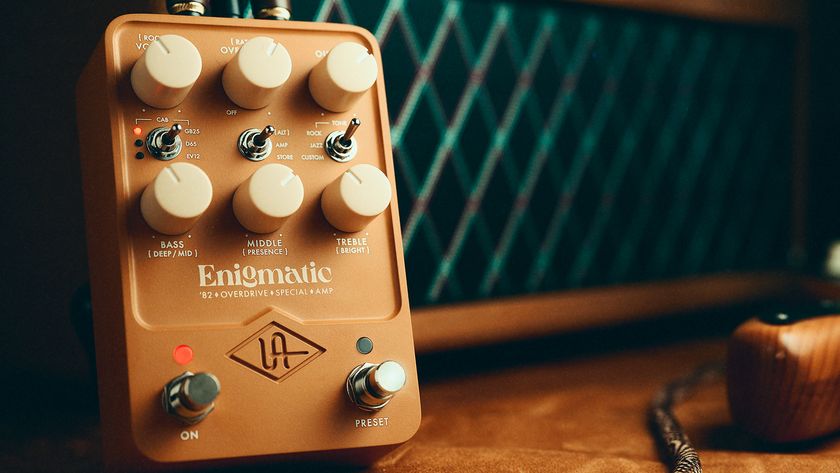
“The pedal is scary good. I haven’t met a guitar player yet who disagrees." Does the new Universal Audio Enigmatic ’82 Overdrive Special Amp pedal capture that Dumble magic? We compared notes with Dumble aficionado Ben Harper

